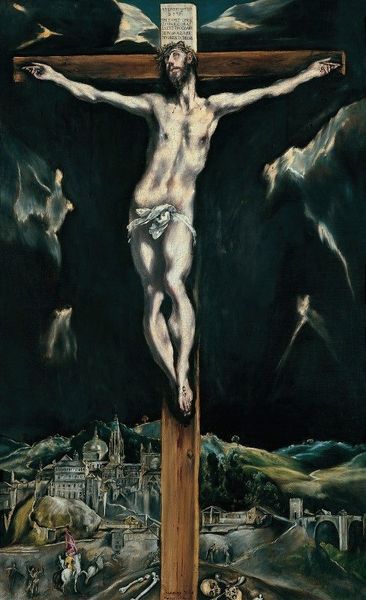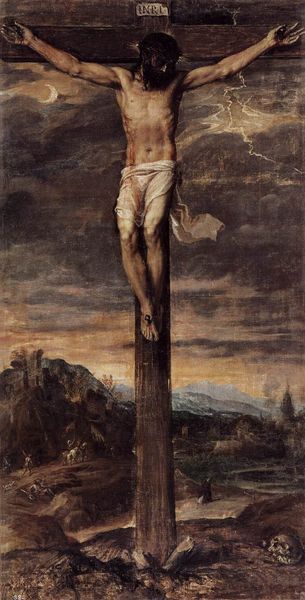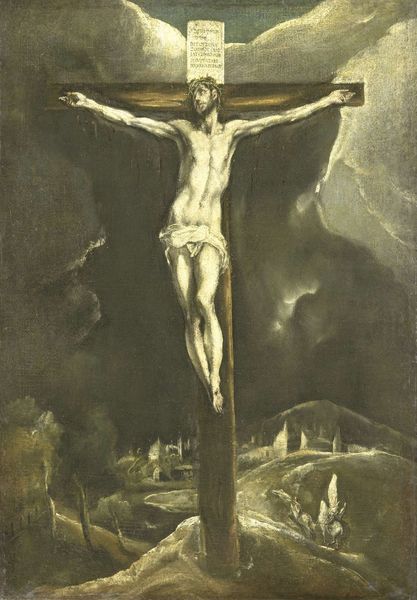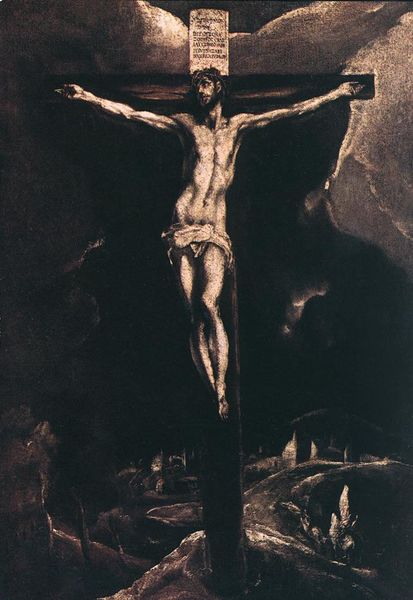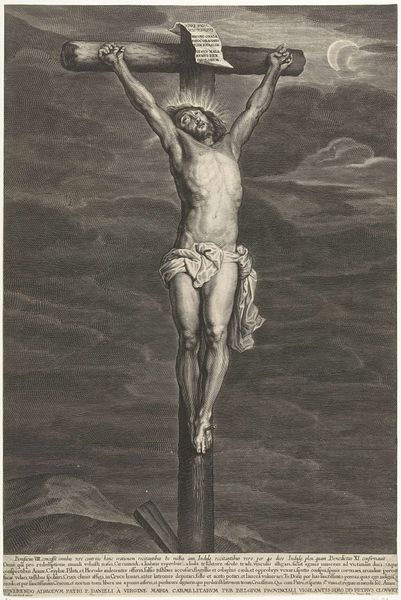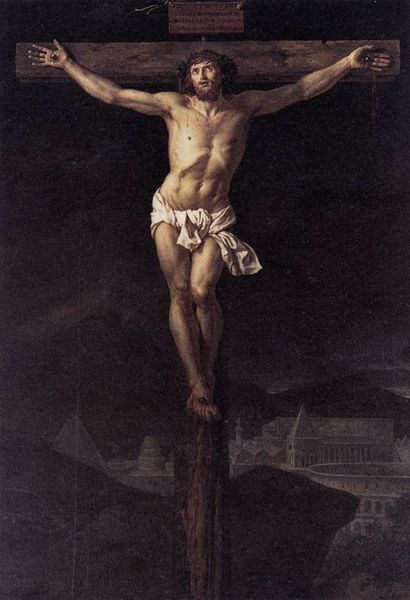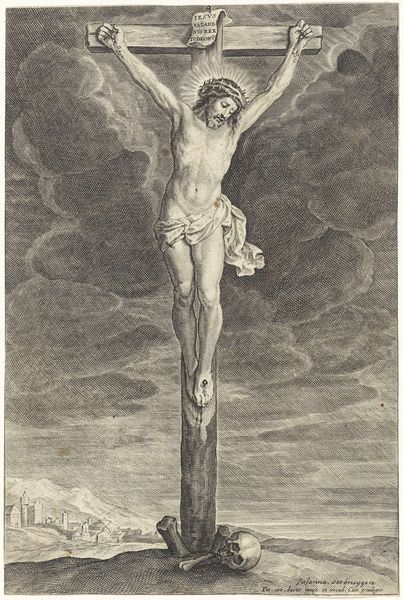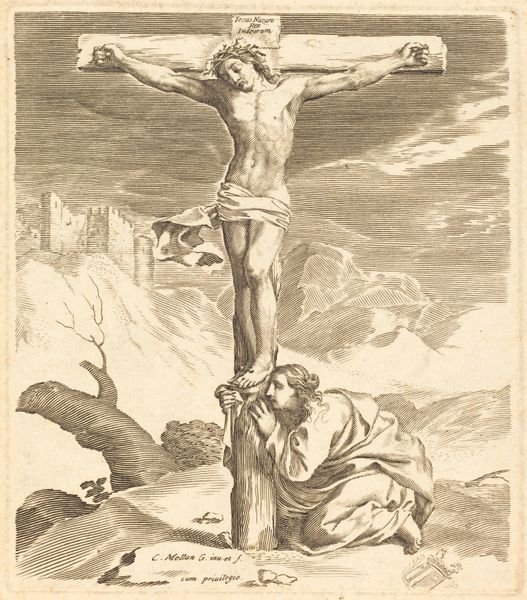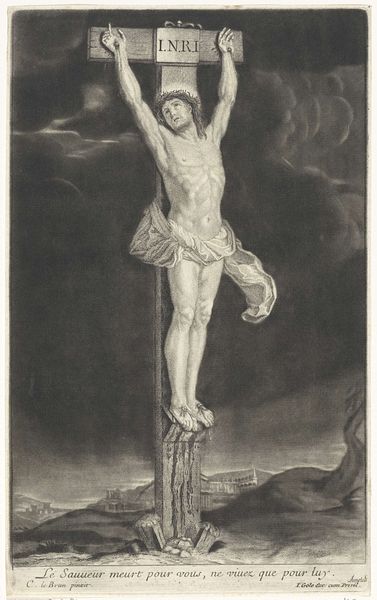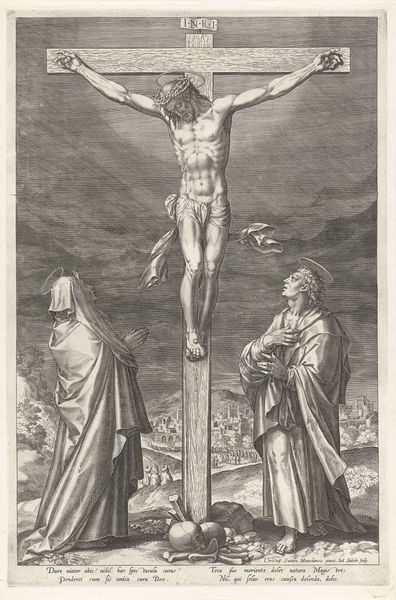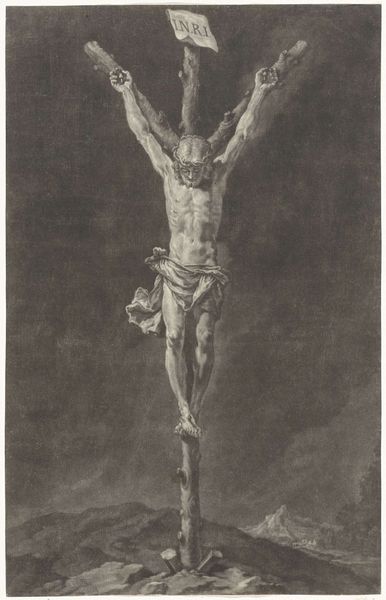
Christ in Agony on the Cross 1605
0:00
0:00
elgrecodomenikostheotokopoulos
Banco Santande Foundation, Madrid, Spain
painting, oil-paint
#
portrait
#
painting
#
oil-paint
#
landscape
#
mannerism
#
figuration
#
oil painting
#
jesus-christ
#
cross
#
christianity
#
cityscape
#
crucifixion
#
history-painting
#
christ
Dimensions: 104 x 62 cm
Copyright: Public domain
Curator: Here we have "Christ in Agony on the Cross", painted around 1605 by El Greco. It’s an oil painting currently held at the Banco Santander Foundation in Madrid. I’m immediately drawn to the stark contrast of light and dark, how does that strike you? Art Historian: A powerful image! The extreme contrast evokes a profound sense of spiritual drama, doesn't it? Look at the figure of Christ, luminous against that almost violently dark sky. It is radiating symbolic weight of suffering. Curator: Absolutely. Thinking about the material conditions of its creation, we see El Greco utilizing the oil medium to great effect, building up layers of paint to create that intense luminescence you're talking about. This was, after all, a commission, serving a particular function within a specific social context of Counter-Reformation Spain. Art Historian: Indeed, but consider how he departs from strict representation to amplify emotional and spiritual content. His elongated forms and unnatural light source serve the deeper symbolism. Christ's body, dramatically contorted, becomes an icon of agony, almost a beacon amid that gathering storm. Curator: Precisely. It's easy to get lost in the emotional response, but looking closer, notice the detailed depiction of the city beneath the cross. It is about place, even ownership. Oil paints allowed a layering of glazes which speak to place in a world newly charted and colonized by color. Art Historian: The cityscape definitely contributes, grounding the divine suffering in the real, material world as you note. And these skulls below the Cross, a clear memento mori, add yet another layer, an explicit reminder of mortality and salvation's promise. Curator: I wonder what pigments were available and accessible at this time. The colors and how they are rendered are beautiful, however they are limited in tone due to manufacturing abilities. Art Historian: These stark images certainly add to the impact. We might be reflecting here how different approaches add depth to such a layered scene. Curator: Indeed. Seeing how El Greco's masterful manipulation of material elevates this into more than a historical document of suffering allows one to examine our current state in contrast. Art Historian: It enriches our appreciation for how he employed symbolism and pictorial structure to convey a sense of spiritual crisis and transcendence.
Comments
No comments
Be the first to comment and join the conversation on the ultimate creative platform.

